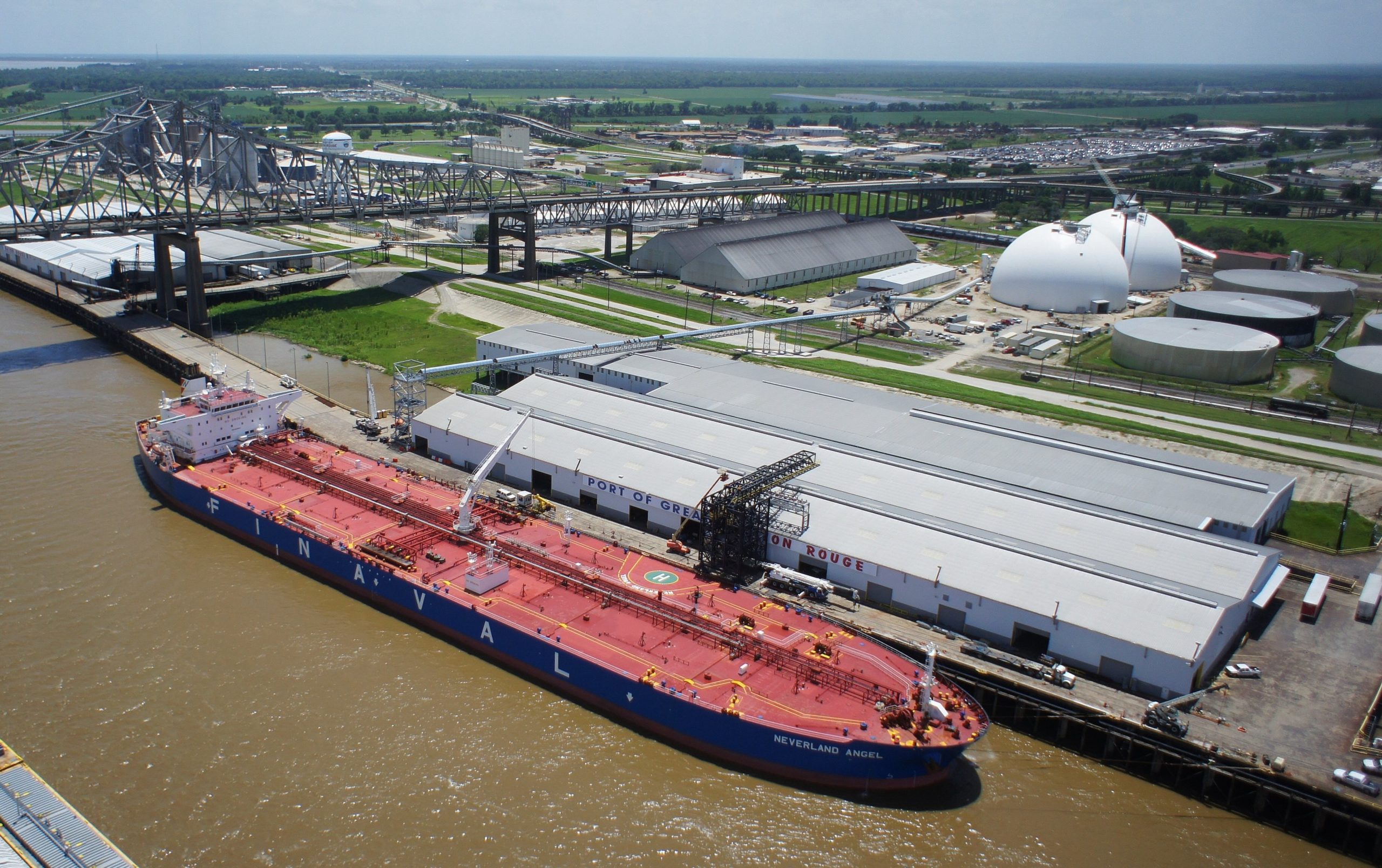Archives
Feature, Freight News, Rail, Road, Sea
Ports Seek to Optimize Lower Mississippi River
[ April 3, 2025 // Gary Burrows ]The World Trade Center New Orleans, or WTCNO hopes to utilize comprehensive analysis to optimize global commodity flows and maximize the economic benefits of the Lower Mississippi River region.
The Lower Mississippi River Commodity Analysis represents a collaborative effort between Louisiana’s five-deep draft ports along the Lower Mississippi River – the Port of Greater Baton Rouge, the Port of South Louisiana, the Port of New Orleans, St. Bernard Port, Harbor and Terminal District, and Plaquemines Port Harbor & Terminal District.
“This collaborative effort underscores the vital role that the Lower Mississippi River plays in driving both regional and national economic growth,” read a statement from the five ports involved in the study. “By working together, our five Louisiana ports are committed to enhancing the efficiency and competitiveness of America’s most critical trade corridor, which connects 31 states and two Canadian provinces to the world. The insights from the ‘Lower Mississippi River Commodity Analysis’ will guide strategic investments, improve cargo movement, and unlock new opportunities across a wide range of industries.”
The analysis provides in-depth insights into commodity flows along the Lower Mississippi River, identifying key opportunities for growth and efficiency improvements. The report analyzes a wide range of commodities – including agricultural products, energy resources, and manufactured goods – offers strategic insights for enhancing trade along the Lower Mississippi River.
Key findings from the report include:
• Access to Mississippi River system is an unparalleled advantage – energy efficient, low-cost transportation system connecting the region to the central and midwestern U.S. is an advantage for the Lower Mississippi River ports.
• Connectivity to all six national (Class 1) railroads ensures goods get to and from markets across the U.S.
• Crescent City Bridge limits size of container vessel – need for downriver container terminal to accommodate growing size of container vessel fleet.
• Strong bulk market growth in biofuels, LNG, grain, wood pellets, cement, and fertilizers present growth options for Louisiana.
• Opportunities to increase breakbulk market exist in forest products, precious metals, aluminum rubber.
• The project cargo market is likely to grow to support major projects including LNG and carbon capture.
• A statewide focus on future energy projects and renewed business attraction efforts from Louisiana Economic Development have and will provide significant opportunities for growth in cargo activity at LMR ports.
The foundation for this comprehensive report was laid by discussions among the five port directors, who identified mutual challenges and areas of collaboration. These initial conversations paved the way for months of collaboration, an effort driven by the shared goal of regional advancement brought to fruition under the guidance of Joe Toomy, former Port of New Orleans chairman.
The analysis was conducted by Martin and Associates, an internationally recognized leading economic and transportation consulting firm who has published studies for major U.S. ports including Houston, Mobile, Miami and New York- New Jersey.
The “Lower Mississippi River Commodity Analysis” is available for download here.

Tags: Port of Greater Baton Rouge, Port of New Orleans, Port of South Louisiana, St. Bernard Port, World Trade Center New Orleans








